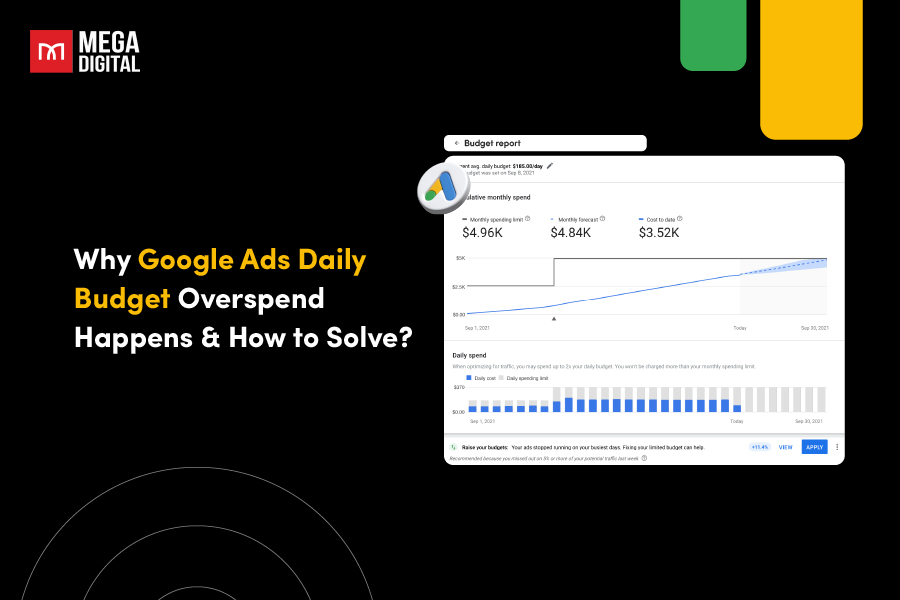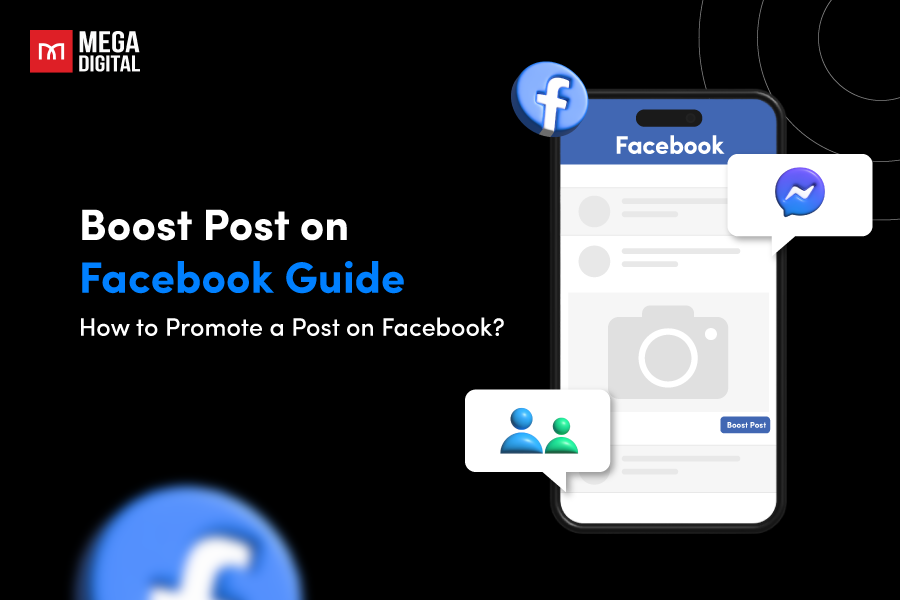Let’s be real—setting up an Etsy store isn’t as simple as just uploading a few product photos and waiting for sales to come in. In this guide, I’ll show you how to create an Etsy shop in six simple steps, along with expert insights and the best real-life examples to ensure your store runs without fail and stands out from the competition.
Contents
What to Prepare Before You Create An Etsy Shop?
Before you dive into creating your store, think of it like preparing a storefront in a busy shopping district. You wouldn’t open without a clear brand identity, well-displayed products, and a pricing strategy, right? The same principles apply to Etsy.
Here’s what you need to have in place before you set up shop.
1. Find Your Niche and Validate Demand
Selling on Etsy isn’t just about making products—it’s about making products people want to buy. A common mistake new sellers make is assuming their idea will automatically sell without checking market demand.
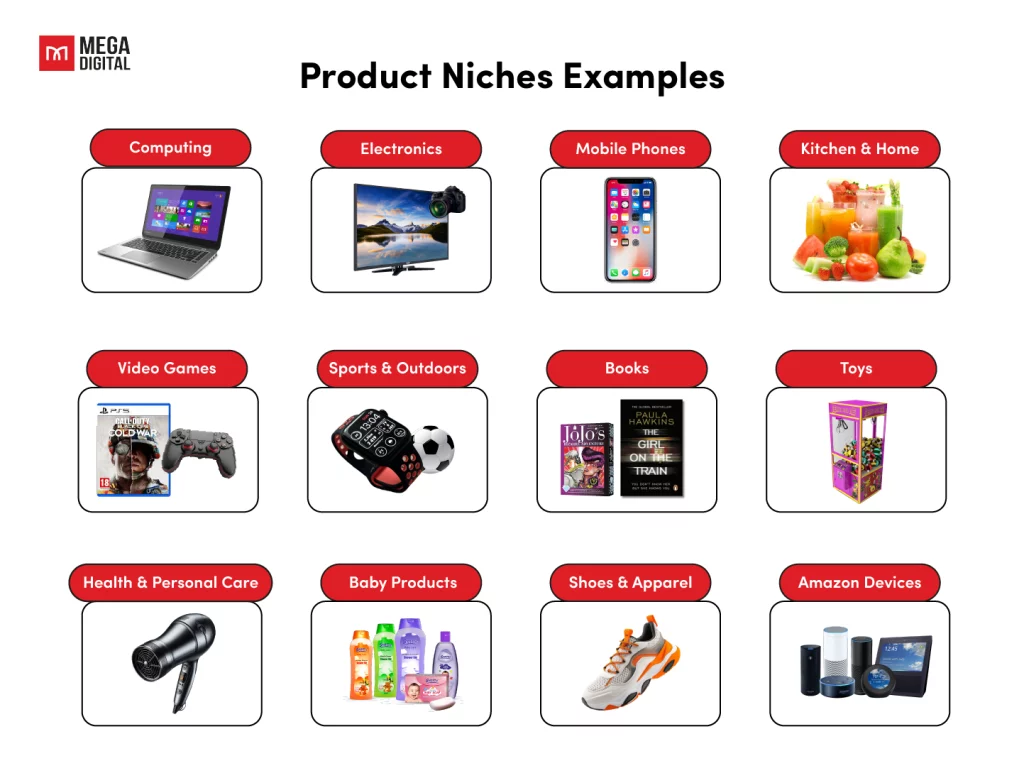
Best practice? Start by researching what’s trending using Etsy’s search bar suggestions, Google Trends, and third-party tools like eRank or Marmalead. This is the first step to identifying the best products to sell on Etsy.
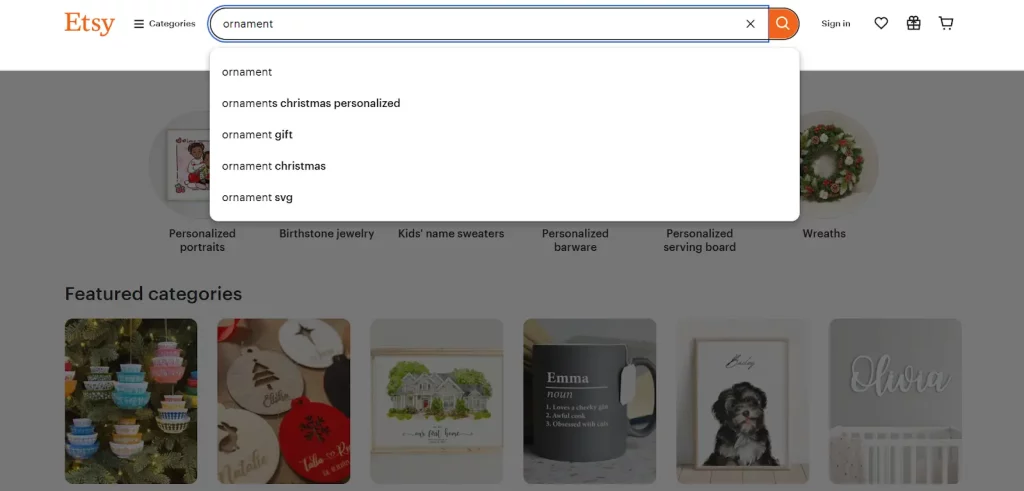
Or, you can look at successful competitors, analyze their best-selling items, and read customer reviews to identify what buyers love—and what they feel is missing. Finding a balance between demand and uniqueness is key.
2. Craft a Strong Brand Identity
Branding is more than just a logo and a shop name—it’s how customers feel when they interact with your store. From your shop’s aesthetics to your messaging, everything should tell a cohesive story.
First, choose a memorable shop name that reflects what you sell and resonates with your audience. For example, a handmade pottery store could go with “Clay & Co.” to highlight its artisan focus, while a vintage jewelry shop might opt for “Timeless Treasures.”
Next, design a professional logo and shop banner using tools like Canva or Adobe Express. A minimalist shop selling Scandinavian-inspired home decor may go for a clean, simple logo with neutral tones, whereas a kids’ clothing brand could use playful fonts and bright colors to attract its target audience.
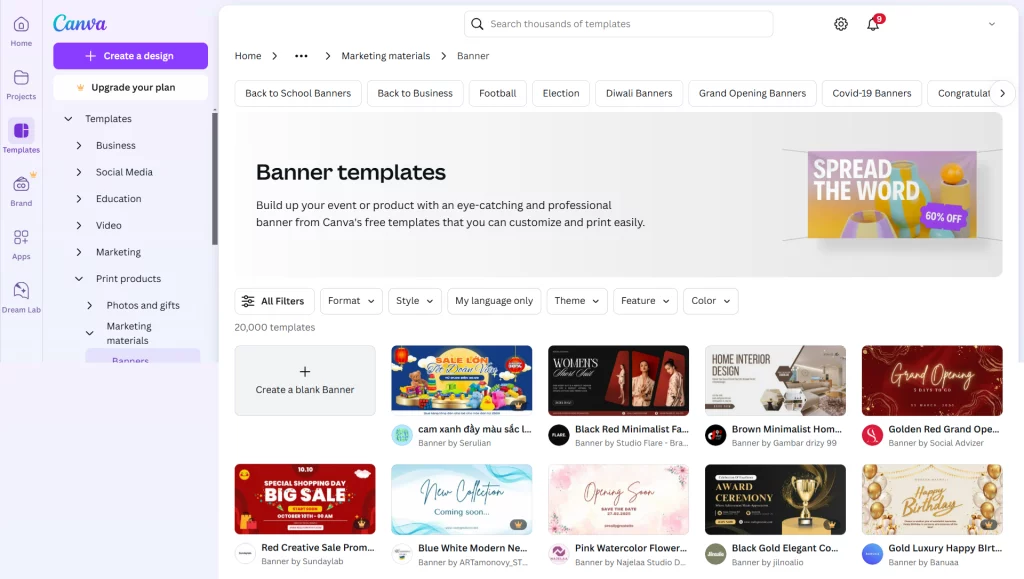
It is also recommended to develop a consistent color palette and typography to use across all visuals. If your shop sells eco-friendly skincare, you might stick to earthy greens and browns to emphasize sustainability, whereas a modern tech accessories brand could use sleek black and silver tones.
Lastly, write a compelling shop bio that introduces you and your products in an engaging way. Instead of a generic introduction, make it personal—if you’re selling handmade knitwear, share how you learned the craft from your grandmother and why it inspires you. If you specialize in personalized gifts, highlight how your products make meaningful moments extra special.
A strong brand builds trust, which is essential when selling online.
3. Create High-Quality Product Listings
Your product listings are your digital storefront, so they need to be visually appealing and informative. Each listing should include:
- High-resolution photos: Use natural lighting, multiple angles, and lifestyle shots.
- A well-written product title: Make it descriptive while incorporating relevant keywords.
- A detailed description: Explain materials, dimensions, benefits, and what makes it unique.
- Optimized tags and categories: These help your product appear in Etsy search results.
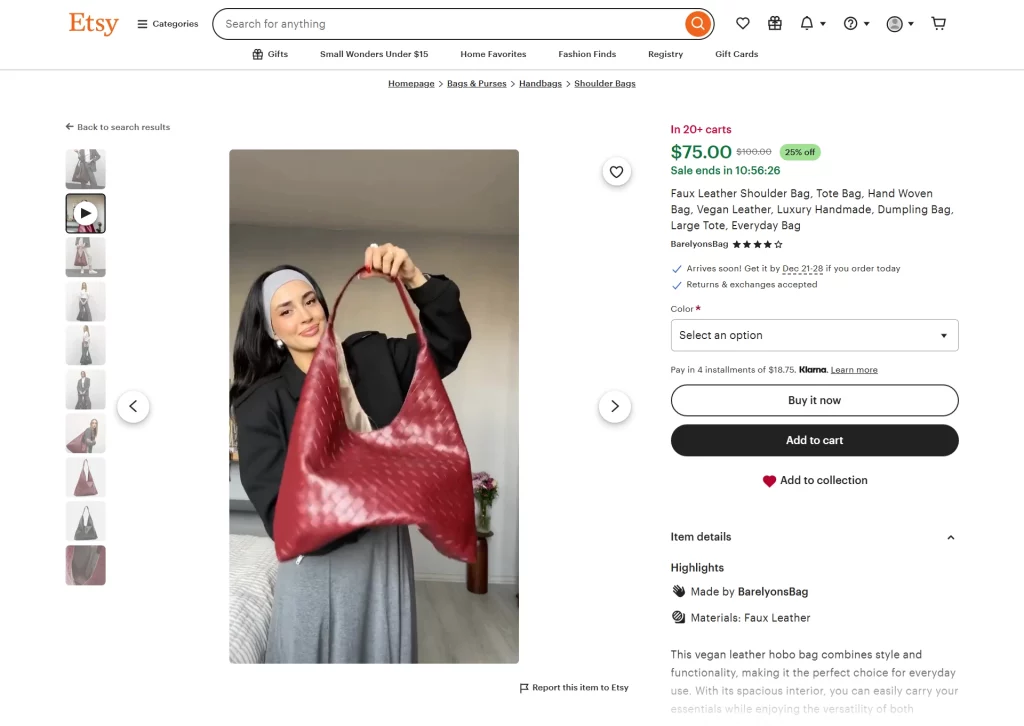
Pro Tip: Browse Etsy’s best-selling listings in your niche and analyze how top sellers structure their descriptions and photos.
4. Set Competitive Pricing & Shipping Policies
Pricing is a balancing act. Charge too little, and you won’t make a profit; charge too much, and customers may choose a competitor. Factor in:
- Material and production costs
- Etsy’s transaction and listing fees
- Market price comparisons
- Perceived value (custom or high-end products can command higher prices)
For example, if you sell handcrafted leather wallets and similar listings range from $50 to $80, pricing yours at $65 with the option for personalization can attract buyers who value customization without exceeding market expectations.
For shipping, you can either offer free shipping (which Etsy favors in search rankings) or charge based on location. If you sell internationally, research different carriers to find the best balance between cost and reliability.
5. Set Up Etsy Payments & Business Essentials
To start selling, you need to connect a business bank account and enable Etsy payment methods, which allow customers to pay with credit cards, PayPal, Apple Pay, and more.
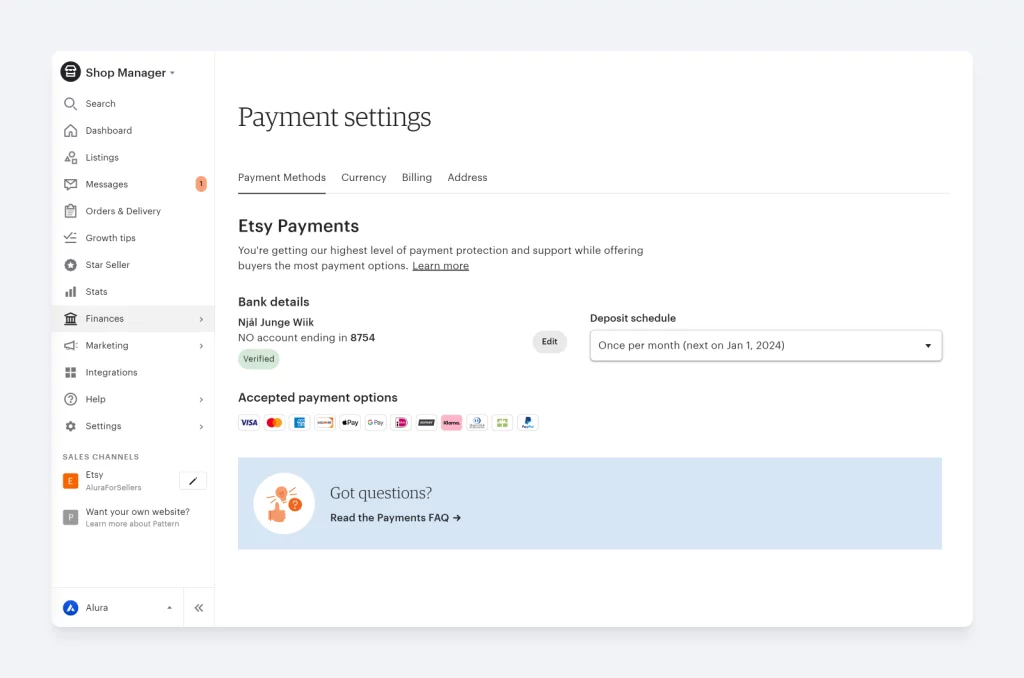
Additionally, if you’re serious about scaling your business, it’s also worth setting up an LLC and using accounting software like QuickBooks to track expenses and revenue.
How to Set Up Etsy Store in 6 Steps
Creating your Etsy shop is a structured process, and each step is crucial to ensuring a smooth launch. If you follow these six steps carefully, you’ll set yourself a solid foundation for success.
Step 1: Sign Up and Set Up Your Etsy Account
The first step in launching your Etsy shop is creating an account on Etsy.com. Once on the platform, click on “Sell on Etsy” and follow the prompts to sign up with your email, Google, or Facebook account.
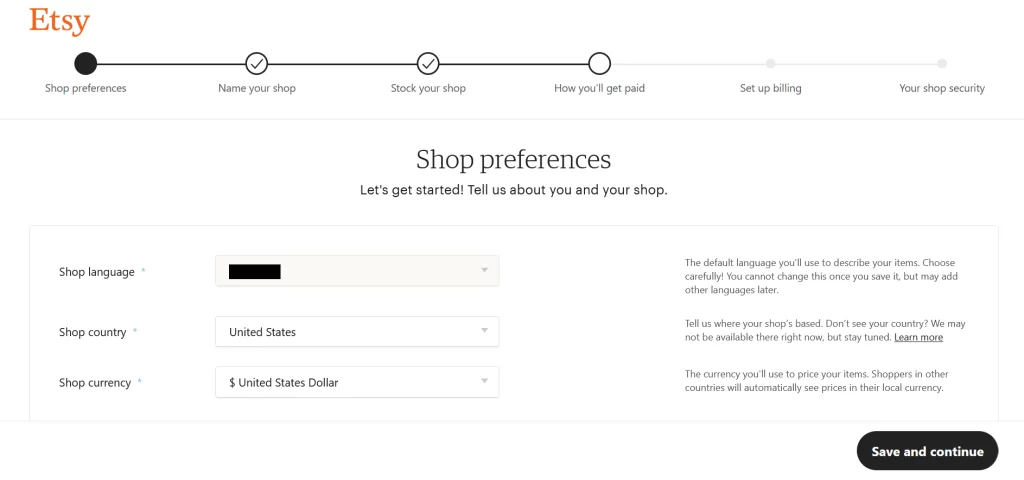
After registering, you will be required to set up your shop by selecting preferences such as language, country, and currency. These choices are crucial because they impact how customers view your products and how payments are processed.
- Language – The default language in which you will create listings and communicate with buyers.
- Currency – The currency in which you price your products. This is essential for international sales, as different currencies may impact pricing strategy.
- Country – The country where you will be registering your business or selling from.
- Shop Intent – Etsy asks whether you are selling full-time, part-time, or as a hobby. While this does not affect your shop’s functionality, it helps Etsy tailor advice based on your business goals.
For sellers who plan to expand internationally, it is important to consider how currency conversion might affect profit margins. Some currencies fluctuate frequently, so pricing should account for potential variations to avoid unexpected losses.
Step 2: Customize Your Shop Name
One of the most important aspects of setting up your shop is choosing a shop name. Your shop name should be unique, memorable, and relevant to your brand. Avoid generic names that do not convey what you sell.
Instead, opt for something distinctive that aligns with your niche and business vision. Etsy has strict naming guidelines, so ensure that your shop name:
- Is between 4-20 characters long
- Contains no spaces or special characters
- Is not already in use by another Etsy seller
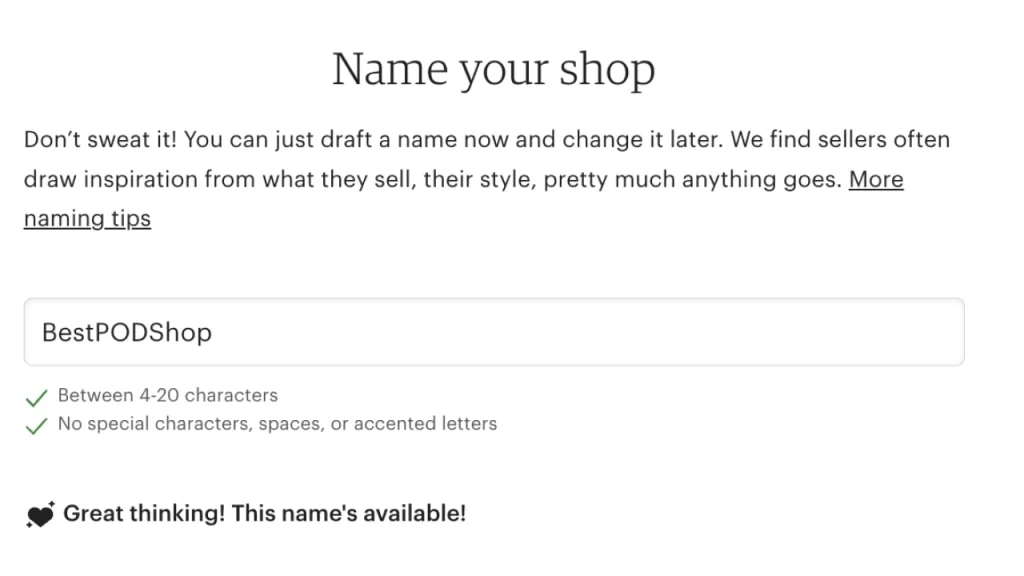
Once your shop name is finalized, you can move on to the next step.
Step 3: Add Your First Product Listing
Your product listings play a critical role in attracting potential buyers. An effective listing includes high-quality images, a well-crafted title, an informative description, competitive pricing, and relevant keywords.
Upload High-Quality Images
Etsy allows up to 10 images per listing, and it is advisable to use as many as possible. High-quality visuals significantly impact a shopper’s decision, as they provide a clear representation of the product.
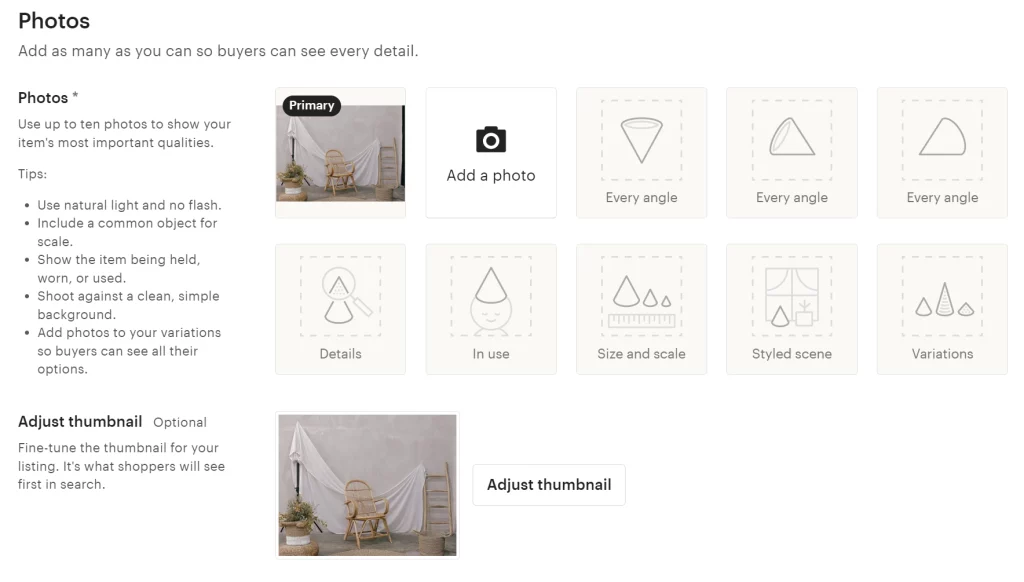
To create effective product images:
- Use natural lighting to enhance the product’s appearance.
- Show the product from multiple angles to give buyers a complete view.
- Include close-up shots to highlight important details.
- Add a lifestyle image to show how the product is used in a real-life setting.
Write a Compelling Title and Description
An Etsy product title should be descriptive and keyword-rich. Instead of using a generic title such as “Handmade Candle,” consider a more detailed approach like:
Example: Handmade Soy Candle – Vanilla & Lavender Scent – 8 oz Glass Jar – Eco-Friendly Gift
This format makes it easier for Etsy’s search algorithm to match your product with relevant searches.
The product description should provide essential details while being engaging and easy to read. Customers typically want to know:
- The materials used in the product
- The size and dimensions
- The intended use or benefits
- The care instructions
- Any customization options available
Set Pricing and Variations
When setting prices, consider factors such as material costs, production time, and Etsy’s seller fees, which include a 5% transaction fee and a 6.5% processing fee. If offering variations such as different colors or sizes, ensure that these options are clearly displayed within the listing.
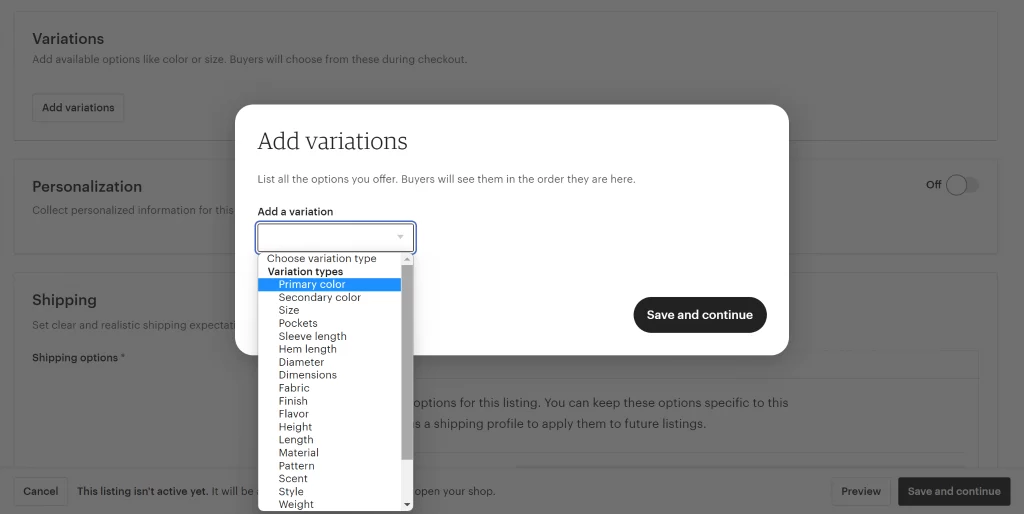
Optimize with Categories and Tags
Etsy allows sellers to add up to 13 tags per listing. Tags help Etsy understand what your product is and improve search visibility. When selecting tags, think like a customer—what terms would they use to search for your product?

For example, if you are selling a bear-designed bag, relevant tags could include:
- Playful bear art bag
- Reusable bag
- Comics bear gift
- Woven organic merch
- Cute cartoon bear
Using a mix of broad and specific keywords increases the chances of appearing in relevant searches.
Step 4: Set Up Payments and Billing
To receive payments from sales, you need to set up Etsy Payments, which allows buyers to pay via credit cards, PayPal, Apple Pay, and other methods. Etsy will also require bank account details for direct deposits.
Additionally, sellers must provide a billing method, typically a credit or debit card, to cover Etsy’s transaction fees. Depending on the country of operation, Etsy may require tax identification information, so it is advisable to check local tax regulations before proceeding.
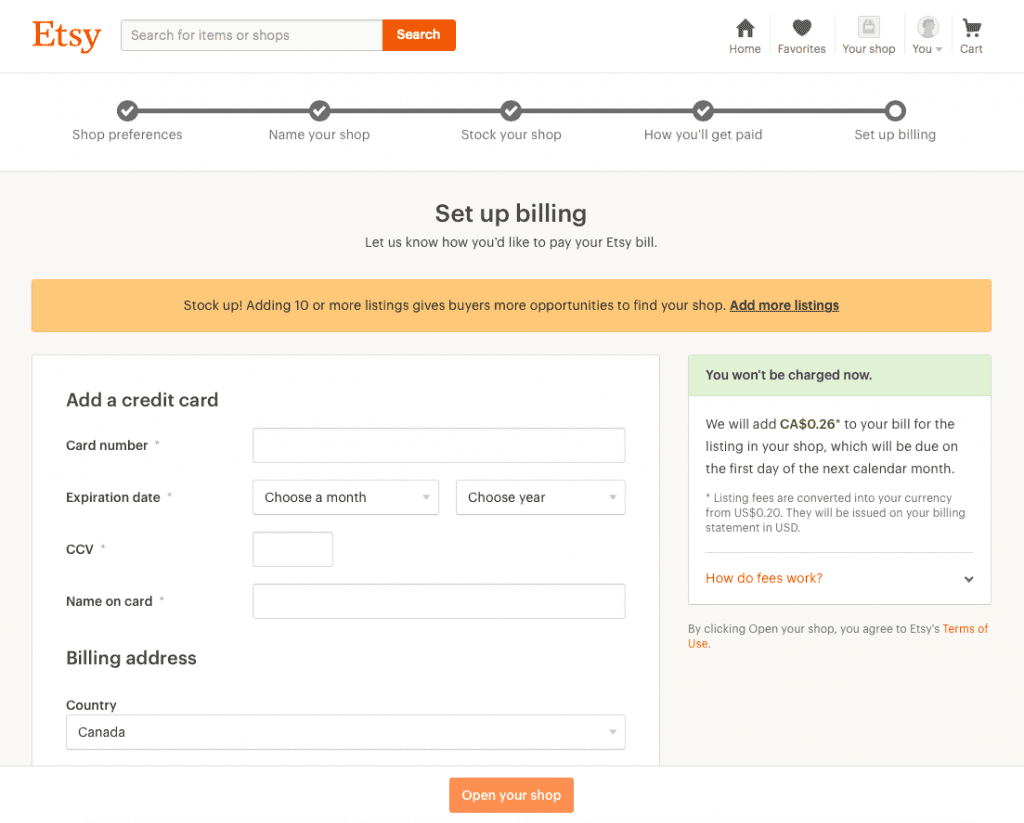
Step 5: Customize Your Shop for Branding
Once the basic setup is complete, it is important to establish a strong brand identity to make your shop more appealing.
Add a Logo and Banner
A professional logo and banner enhance credibility. If you do not have a design background, free tools such as Canva can help create visually appealing branding materials.
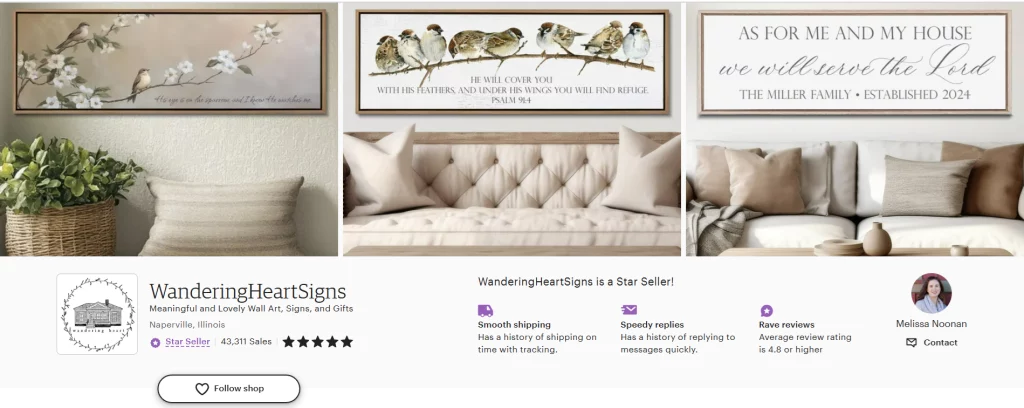
Write the “About” Section
Buyers appreciate knowing the story behind a brand. The shop bio should be concise yet engaging, highlighting what makes your products unique.
Example: “We believe that every home should be filled with meaningful and lovely decor. This shop started with a vision to create signs with a message and signs with beauty in them. Inspired by our own love of home, these signs are made with museum-quality canvas and then framed in deep, gorgeous frames.”
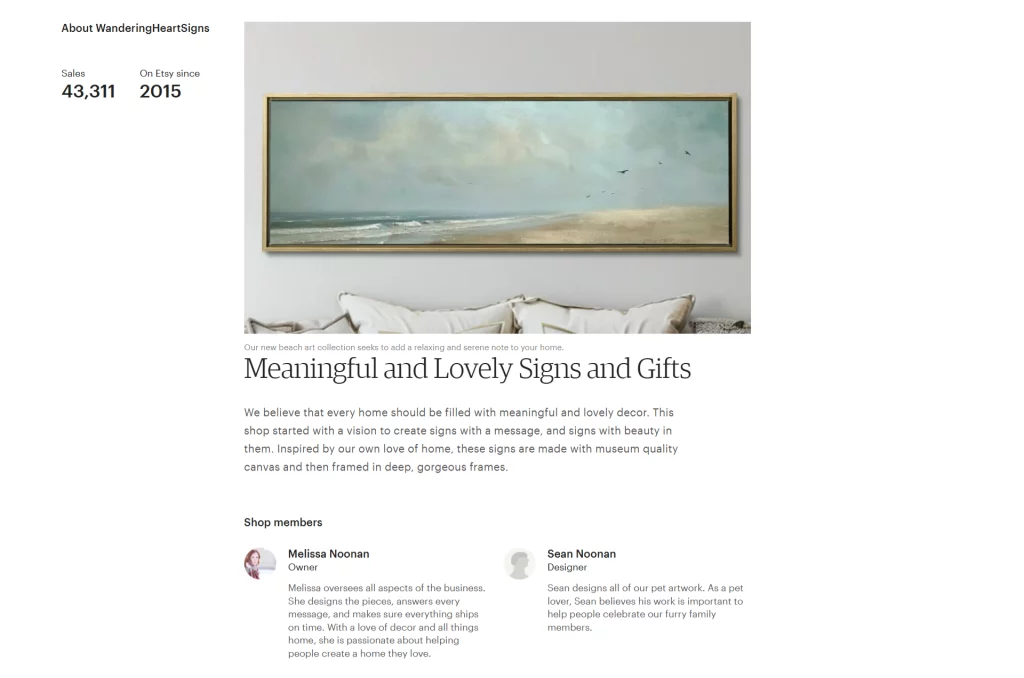
Establish Shop Policies
Clear shop policies set buyer expectations and prevent disputes. This includes:
- Shipping times and methods
- Cancellations, return, and exchanges policies
- Customization and special order details
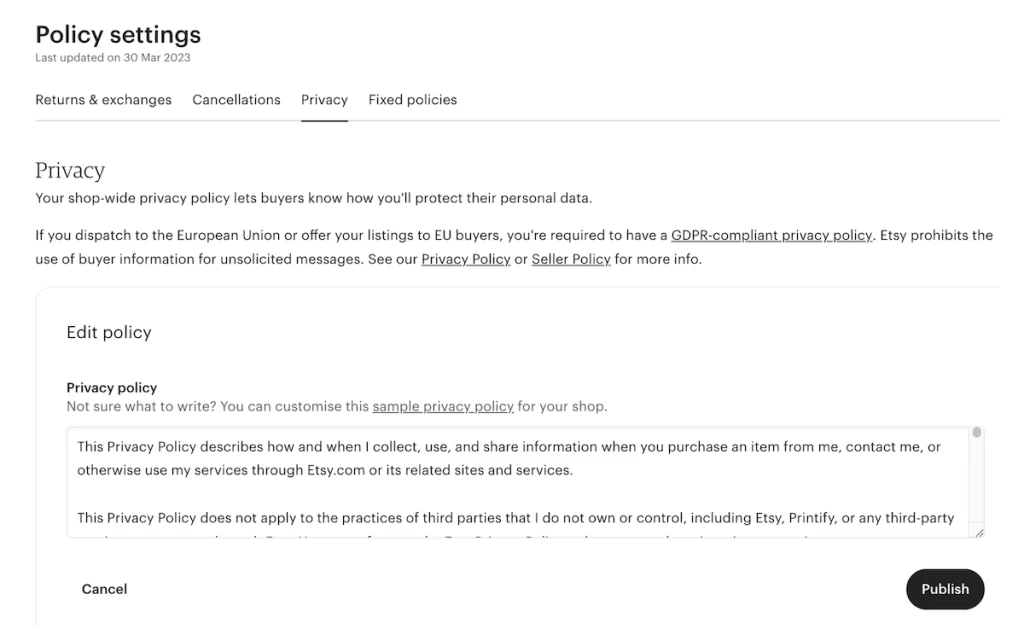
Having transparent policies builds trust and improves the overall shopping experience.
Step 6: Launch Your Shop
After following these six steps and finalizing the setup, your Etsy shop will be officially live and ready for customers.
How to Verify Your Etsy Store Setup
Now, you might be thinking, “Alright, set up Etsy shop done; I’m all set and good to go.”
Well, not so fast, tiger. Before you officially launch your Etsy shop, you need to ensure that everything is correctly set up. Think of this as a final quality check before opening your doors to customers.
Here’s a detailed guideline to verify that your Etsy store is optimized for success:
1. Review Your Listings for SEO and Accuracy
Go through each of your product listings and confirm that the fundamental SEO for Etsy criteria check out:
- Titles include relevant keywords without being too long or unnatural.
- Product descriptions clearly explain what customers can expect, including materials, dimensions, and special features.
- Tags and categories match what buyers would typically search for.
- High-quality images are uploaded, with at least 5-10 photos per listing.
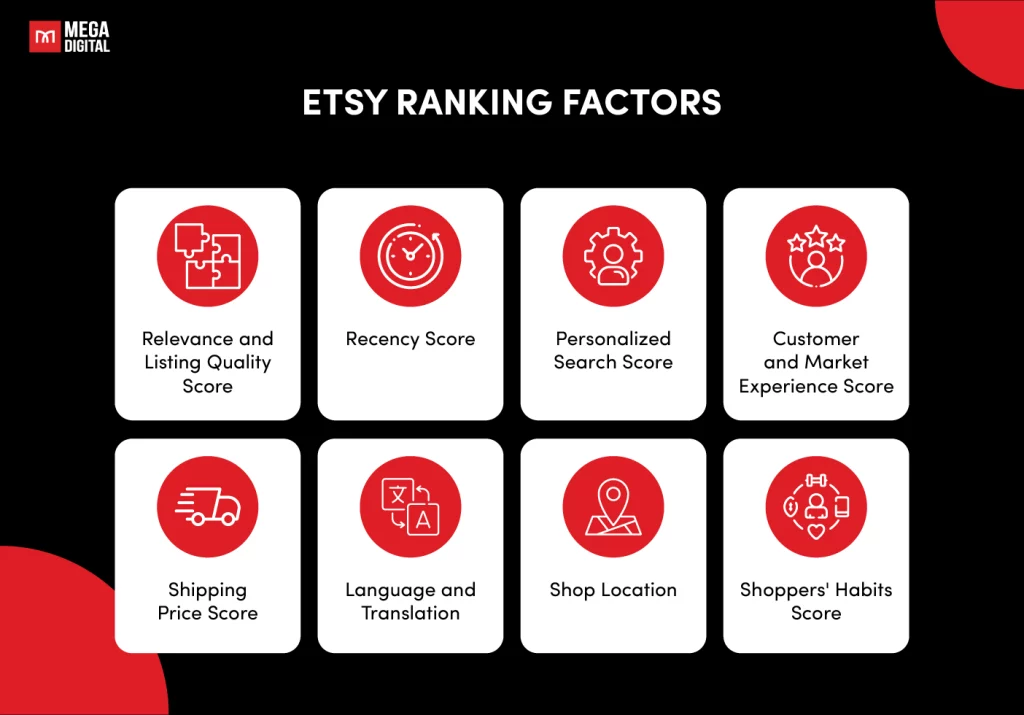
2. Test Your Pricing and Checkout Process
Check that:
- Your pricing reflects all costs, including Etsy’s listing fees, transaction fees, and potential shipping costs.
- Shipping profiles are correctly configured so customers see accurate delivery estimates.
- You’ve added a test product to cart and reviewed the checkout experience.
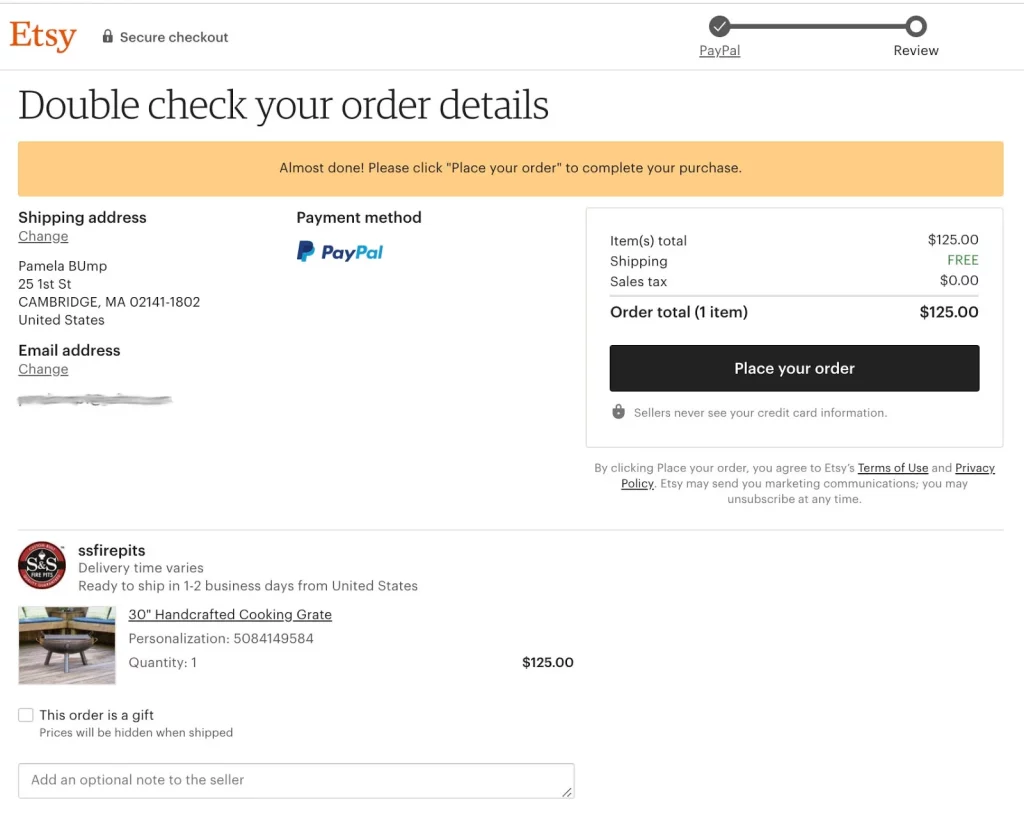
3. Ensure Etsy Payments is Fully Set Up
Make sure:
- Your payment information is correctly linked to receive payouts.
- You have reviewed Etsy’s seller fees and policies.
- You’ve set up your tax information if applicable.
4. Double-Check Shop Branding and Policies
Last but not least, don’t forget to:
- Your shop banner, logo, and bio are consistent with your brand identity.
- You’ve clearly stated return, exchange, and shipping policies to avoid disputes.
- Your shop FAQ answers common customer concerns.
Once everything is checked and in place, you’re all set to go!
>>> Read more: Marketing on Etsy: Top 15 Strategies to Promote an Etsy Shop
Best Practices when Creating an Etsy Shop
After setting up your Etsy shop, your next priority should be optimizing it for long-term success. The most successful sellers don’t just create a store—they implement strategies to grow their audience, attract consistent traffic, and maintain strong customer relationships.
Below are essential best practices to follow when creating an Etsy shop.
Promote Your Etsy Shop
Launching a shop does not guarantee sales—promotion is necessary to attract traffic.
Platforms like Instagram, TikTok, and Pinterest are excellent for driving traffic to Etsy shops. Sharing behind-the-scenes content, customer testimonials, and product demonstrations can boost engagement and interest.
@cococoschiffer @Etsy favorite finds!!!!
♬ original sound – Coco Schiffer
You can also consider running Etsy Ads as they can improve visibility by placing listings at the top of relevant search results. Starting with a small budget allows sellers to test which products perform best before scaling up.
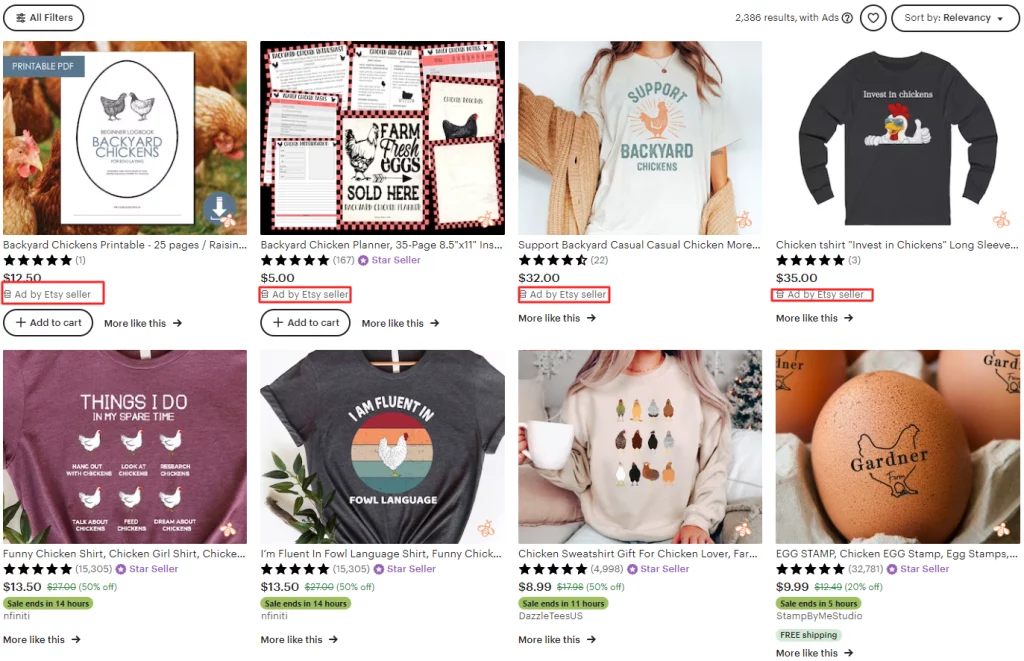
Encourage Customer Reviews
Positive reviews enhance credibility and help with search rankings. Etsy’s algorithm prioritizes shops with strong reviews because it signals trustworthiness and customer satisfaction.
A simple way to encourage reviews is by including a personalized thank-you note with orders, politely asking customers to share their experience. Following up with a friendly message after delivery can also increase the likelihood of receiving feedback.
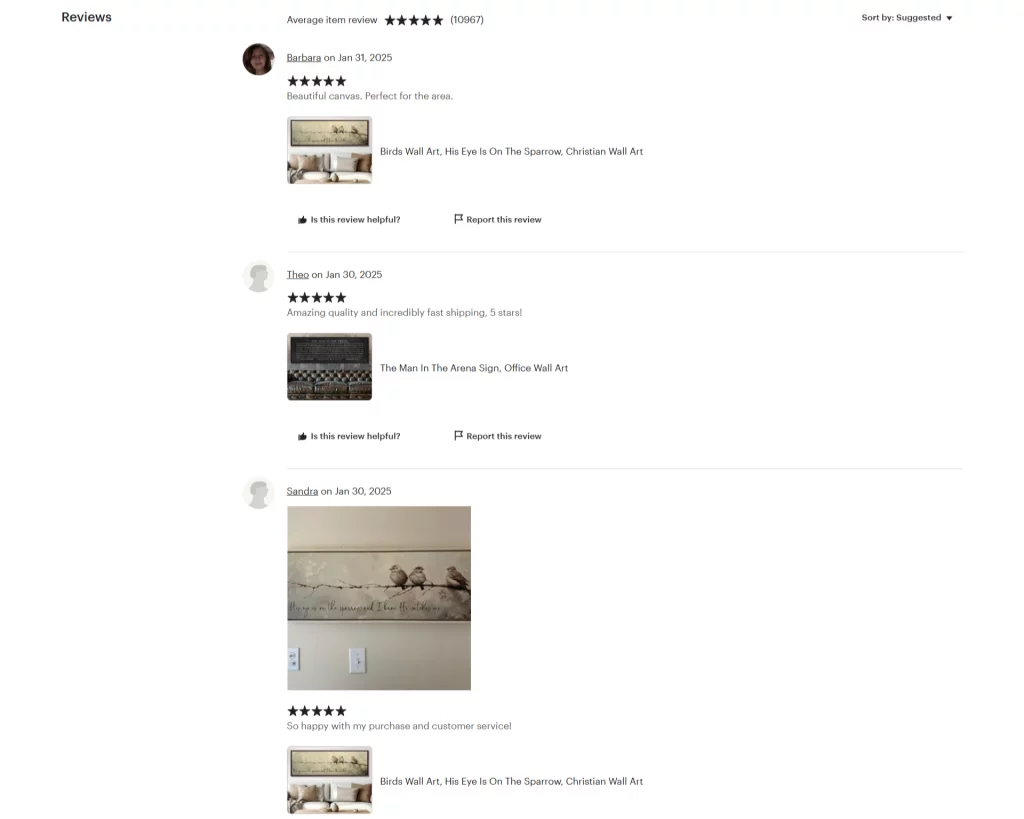
Optimize Your Listings Regularly
Your initial product listings are just the beginning. Monitoring performance and making data-driven adjustments is crucial for maintaining and improving sales.
Regularly updating product descriptions, testing different pricing strategies, and refreshing listing photos can make a significant impact on conversion rates.
If a listing isn’t performing well, experiment with different keywords, images, and promotional tactics to see what resonates with buyers.
Offer Competitive Shipping and Discounts
Shipping costs can be a deal-breaker for many buyers. Offering free shipping or discounts on multiple-item purchases can encourage larger orders and repeat business.
Etsy favors listings that provide free shipping, so factoring shipping costs into your product pricing can help your shop rank higher in search results.
Additionally, running limited-time discounts or exclusive promotions for returning customers can build brand loyalty and encourage more frequent purchases.
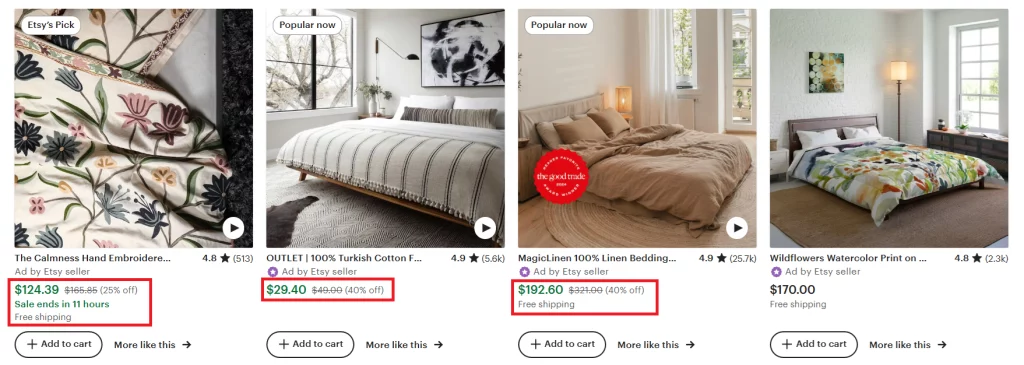
Real-World Examples of Well-Built Etsy Shops
To truly understand what makes an Etsy shop successful, let’s analyze two real-world examples. These shops excel in different ways, offering valuable insights into how you can optimize your store for success.
Wandering Heart Signs
This shop is an excellent, textbook example of a well-branded and well-executed Etsy business, especially for those researching how to sell art on Etsy.
Specializing in wall art and customized wooden signs, Wandering Heart Signs has carved out a niche in home decor and gifting.
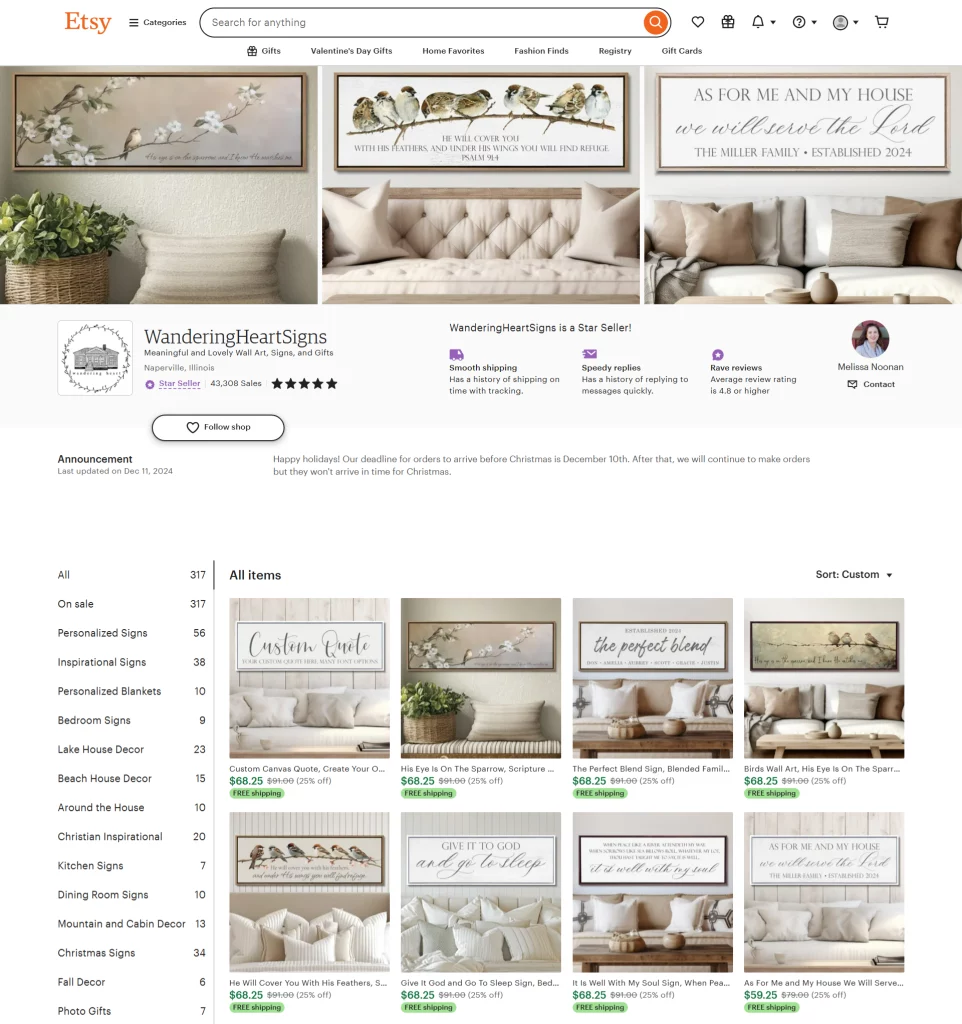
Here’s what makes it stand out overall:
- Consistent Branding: The shop maintains a rustic, warm, and homey aesthetic, which appeals to its target audience.
- High-Quality Product Listings: The listing images are clean, well-lit, and showcase the product in different settings and decor to help customers visualize how the signs will look in their space.
- Strong Customer Engagement: The shop responds promptly to reviews and offers excellent customer service, increasing customer loyalty.
- Personalization Options: Many listings allow for custom text, appealing to gift buyers looking for unique presents.
- SEO Optimization: Well-crafted titles and keyword-rich descriptions help the shop rank higher in search results. Each listing includes relevant keywords such as “custom wood sign,” “personalized home decor,” and “farmhouse wall art.”
>>> Read more: 30 Best Digital Products to Sell on Etsy: A Profitable Suggestion
Amy Engraved Gifts
Another outstanding example of a well-set-up Etsy shop I want to analyze is Amy Engraved Gifts. This shop specializes in customized pet accessories, particularly engraved pet collars. And, they have achieved admirable results.
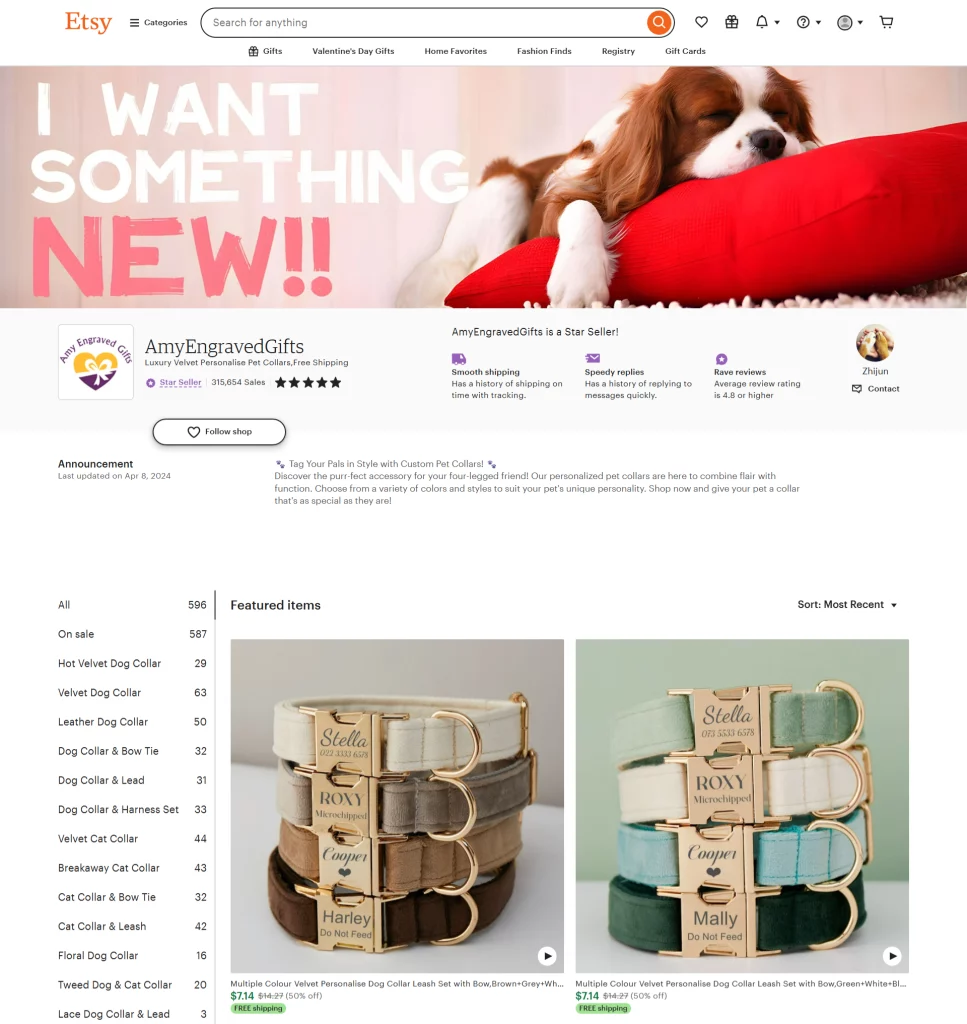
What can we learn from them specifically?
- Niche Specialization: By focusing solely on personalized pet collars, the shop has built a strong brand identity catering to pet owners who want high-quality, customized items.
- Product Presentation: The shop uses detailed product photos that show the engraving quality, material durability, and available color options.
- Keyword Strategy: Listings are optimized with terms like “engraved dog collar,” “custom pet ID,” and “personalized puppy tag” to maximize search visibility.
- Competitive Pricing: Pricing is balanced well with quality, making it an attractive option for pet owners looking for personalized accessories.
- Excellent Customer Service: The shop boasts a high rating due to quick response times and accommodating customer requests, which leads to positive reviews and repeat buyers.
All in all, these two Etsy shops succeed because they don’t just sell products—they sell experiences. Their success highlights the importance of branding, quality listings, effective SEO, and exceptional customer engagement. If you implement similar strategies, you can prepare your own Etsy shop for sustainable growth.
Final Word
Now that you know how to create an Etsy shop, take action. Open your store, refine your approach, and watch your business grow. And if you need expert guidance, Mega Digital is here to help you every step of the way!
Stay tuned for more e-commerce insights and growth strategies from Mega Digital!







